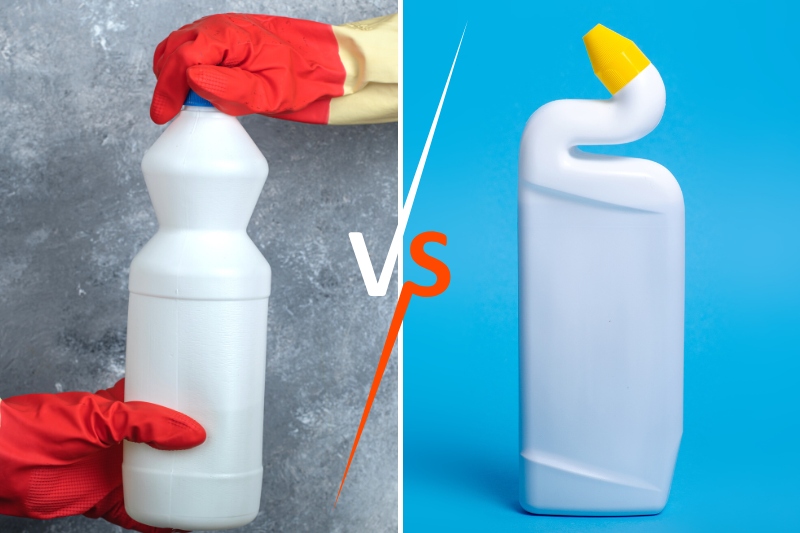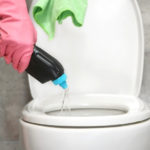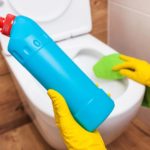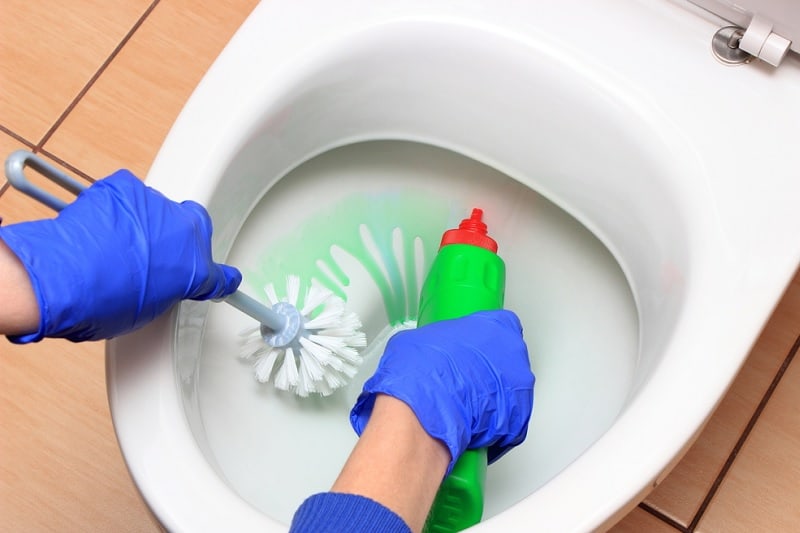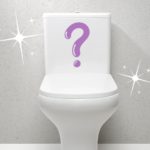Many people use bleach to clean their toilets because of its disinfectant and whitening properties. Are toilet cleaner and bleach the same thing? Not exactly.
Toilet cleaner can, and often does, contain bleach. However, not all toilet cleaner products do.
Unlike bleach, toilet cleaners contain several other ingredients that help tackle other issues common to toilets such as bacteria and limescale, whilst being safe to use on porcelain.
Bleach and toilet cleaner are not interchangeable. Below we’ll outline the differences between the two and when to use each.
What’s the Difference Between Toilet Cleaner and Bleach?
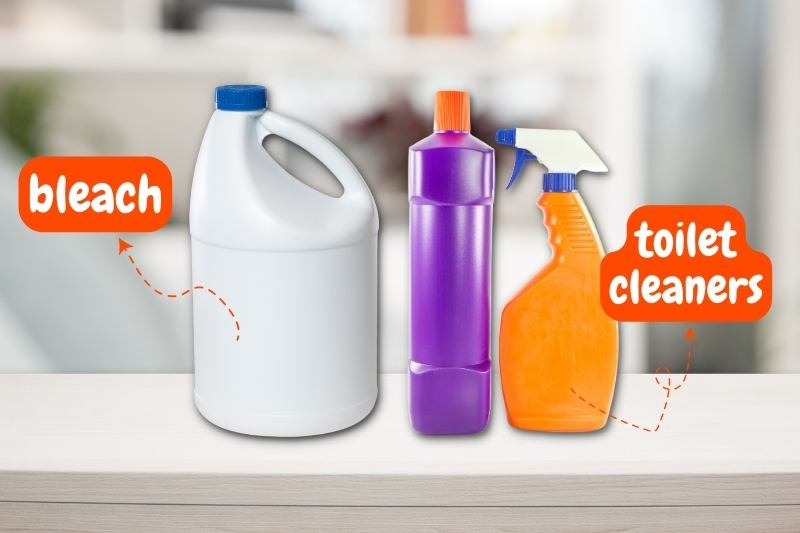
Toilet cleaner is specifically designed to clean a toilet bowl and all of the types of dirt that can build up there. For that reason, toilet cleaners usually contain ingredients to kill bacteria, remove limescale and add a pleasant scent to the toilet.
Bleach, on the other hand, is the common name for diluted sodium hypochlorite and has disinfectant and whitening properties.
Toilet cleaner and bleach should never be mixed, as mixing certain products with bleach can cause the release of toxic gases that could be harmful when inhaled.
Is It Safe to Pour Bleach in the Toilet?
Some people have reservations about using bleach in a toilet. It’s thought that putting bleach on porcelain can erode it over time.
Others think that bleach erodes toilet pipes, causing toilet paper to get stuck in the cracks and eventually cause a blockage.
After treatment, toilet water is disposed of in rivers, causing some to question the effect that it’s having on marine life.
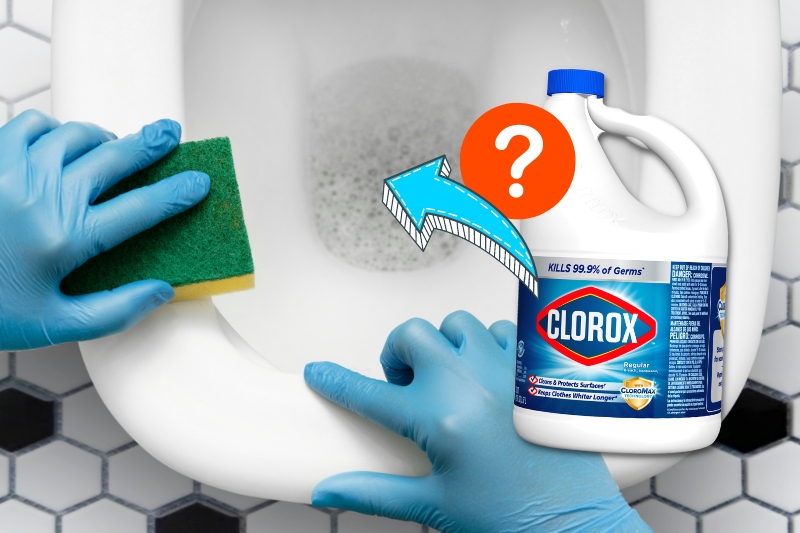
Should You Use Bleach to Clean a Toilet?
Bleach has disinfectant and whitening properties, which are good for cleaning toilets. However, it won’t remove limescale build up. Plus, if you’re worried about bleach eroding your toilet or pipes, you may want to avoid it.
Experts agree that bleach is safe to use on toilets in small concentrations. However, it might be a better idea to use a bleach-based toilet cleaner product rather than plain bleach.
A bleach-based toilet cleaner will contain the right amount of bleach and will be mixed with other ingredients to ensure the bleach doesn’t do any damage.
In any case, it’s safer and more efficient to use a specialist toilet cleaner product to clean your toilet. As previously mentioned, toilet cleaners contain ingredients that are specifically designed to tackle problems that toilets often have, such as limescale.
Can You Use Toilet Cleaner on Other Surfaces?
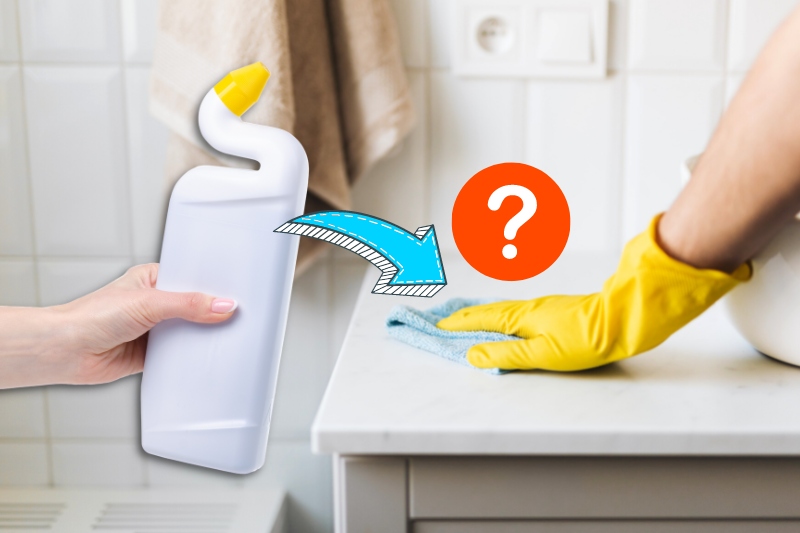
It’s best not to risk using toilet cleaner on other surfaces as it has been specially made for porcelain surfaces and contains acids which remove limescale. These acids are harsh and may damage other surfaces.
As previously mentioned, some toilet cleaners also contain bleach and bleach cannot be used on every surface.
While some toilet cleaners may be harmless when used elsewhere, it’s not intended to be used on other surfaces so it’s better to be safe and keep the toilet cleaner in the toilet.
What Else Can You Use Bleach For?
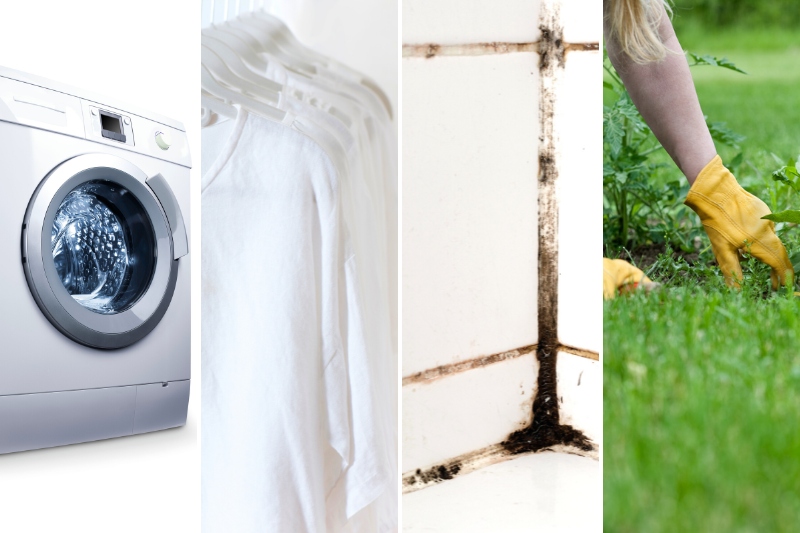
Bleach is best for tackling harsh stains and for deep cleans. Plus, it has disinfectant and whitening properties. It should be used carefully and diluted properly. You should also test it on an inconspicuous area first if you’re not sure whether or not it will damage a surface.
Here are some things you can use bleach for:
- Cleaning your washing machine
- Whitening clothes
- Removing mould from grout and other surfaces
- Disinfecting items that may suffer from a buildup of bacteria, such as chopping boards, bins and plastic toys
- Killing weeds in the garden
- Brightening up glassware or porcelain surfaces

In The Wash is your guide to the best laundry and cleaning products, tips and tricks. Our mission is to solve the UK’s cleaning and laundry dilemmas!
